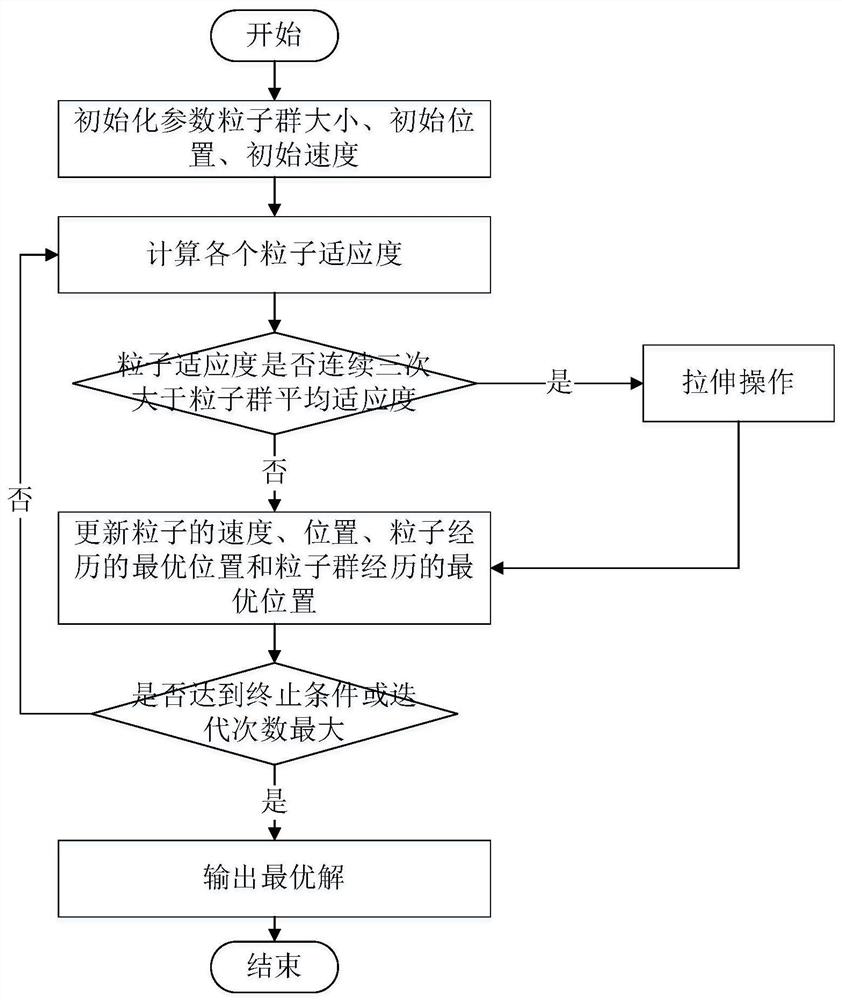Medium and long term runoff forecasting method based on improved particle swarm optimization algorithm and support vector machine
A technology of particle swarm optimization and support vector machine, applied in multi-objective optimization, design optimization/simulation, etc., can solve problems such as finding the best parameters of SVR
- Summary
- Abstract
- Description
- Claims
- Application Information
AI Technical Summary
Problems solved by technology
Method used
Image
Examples
Embodiment 1
[0045] Such as figure 1 As shown, in this embodiment, a medium and long-term runoff forecasting method based on an improved particle swarm optimization algorithm and support vector machine is provided, including the following steps,
[0046] S1. Select the historical data of multiple climate indices and the historical runoff of the watershed to be forecasted, and select the top 20 climate indices with the strongest correlation with the runoff of the watershed to be forecasted from the historical data of multiple climate indices as the forecasting factors, and set The key influencing factors obtained after the processing of the predictors are combined with the historical runoff of the watershed to be forecasted to construct a model data set, and the model data set is divided into a training set and a test set in proportion;
[0047] S2. Perform stretching operations on the particles trapped in local optimum in the particle swarm optimization algorithm to obtain an improved part...
Embodiment 2
[0088] In this embodiment, the runoff forecasting method of the present invention is further described in detail in conjunction with specific examples.
[0089] 1. Build a model dataset
[0090]The climate index set is obtained from the National Climate Center of the China Meteorological Administration, with a total of 130 items. It contains 88 atmospheric circulation indices, 26 sea temperature indices and 16 other indices. Analyze the correlation strength between 130 climate system indices and historical runoff and extract the 20 primary predictors with the strongest correlation to form the primary predictor matrix. Principal component analysis is used to reduce the dimensionality of the primary predictor matrix (eliminate Repetition, redundancy factors, reduce feature dimension) to get the key influencing factor matrix. Then, the maximum and minimum normalization processing is performed on the key influencing factor matrix, and then the model data set is constructed by co...
PUM
 Login to View More
Login to View More Abstract
Description
Claims
Application Information
 Login to View More
Login to View More - R&D
- Intellectual Property
- Life Sciences
- Materials
- Tech Scout
- Unparalleled Data Quality
- Higher Quality Content
- 60% Fewer Hallucinations
Browse by: Latest US Patents, China's latest patents, Technical Efficacy Thesaurus, Application Domain, Technology Topic, Popular Technical Reports.
© 2025 PatSnap. All rights reserved.Legal|Privacy policy|Modern Slavery Act Transparency Statement|Sitemap|About US| Contact US: help@patsnap.com



